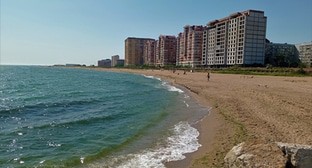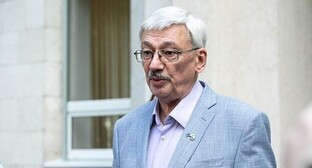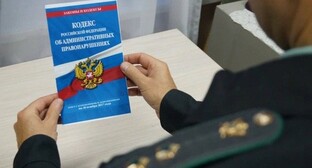29 May 2003, 13:47
Kabardins
They call themselves Adige. Aboriginal population of Kabardino-Balkaria. They also live in Krasnodar and Stavropol territories and in the North Osetia. Their population in Russia is 386 thousand people (1989) including over 300 thousand in Kabardino-Balkaria. They belong to the intermediate anthropological type (between the Caucasian and Pont) of the Balkan-Caucasus race of the big European race. They speak the Kabardin- Cherkes language of the Abchaz-Adig group of the North Caucasus family. Russian language is also common. Written language is based on Russian alphabet. Religious people are Moslems-sunnites, Kabardins of Mozdok are mainly Orthodox Christians.
The ancestors of the Kabardins (same as the other Adig peoples - modern Adigs and Cherkes) were the native population of the North and North-Western Caucasus. Since the 1-6th centuries they are known as Zikhs, in the 13-19th centuries - as Cherkes. In the middle of the first millenium part of the Adigs were pushed away by Huns behind the Kuban river. In the 13-15th centuries there was a backward movement in the Central Caucasus, thus the Kabardin nation formed and an independent political unit Kabarda. In 1557 Kabarda joined Russia willingly. Feudalism existed in the 16-18th centuries, the board of feudal leaders elected the supreme prince - uali. There retained the ancient archaic forms of public power : public meetings, secret male unions. Since the second half of the 19th century the speed of social and economical development increased under the influence of Russian culture, there appeared the national intelligentsia.
The processes of the ethnic consolidation of the Kabardins increased when they received autonomy during the Soviet time. In 1921 the Autonomous District of Kabarda was formed within the Russian Soviet Federative Socialist Republic, in 1936 it became the Kabardino-Balkarskaya Autonomous Soviet Socialist Republic (nowadays - Kabardino-Balkarskaya Republic).
Traditional occupations of Kabardins - agriculture and distant-pasture cattle-breeding, mainly horse breeding (Kabardin breed is world-famous). Trades and crafts are well-developed: male - smith?s work, armory, jewelry, female - making felt, broadcloth, embroidery with gold. Traditional patters - stylized elements of animals and plants, horn-shaped curves.
Till the middle of the 19th century the settlements had chaotic planning, later - streets. Besides the main house, the princes, nobles and well-to-do peasants had a house (yard) for the guests - kunatskaya.
The dwelling was turluk, rectangular, with a two-slope of four-slope straw roof. Adobe and stone houses, metal and tile roofs appeared in the second half of the 19th century. The house is divided into several rooms with separate entrances according to the number of segments of an extended family.Traditional male costume - cherkeska with a silver belt and a dagger, papakha, morocco boots with stockings; overcoats - burka, sheepskin coat, bashlik. Traditional female dress - trousers, tunic-shaped shirt, long single-back dress, silver and golden belts and breast-plates, gold-embroidered hat, morocco boots.
Traditional food - boiled and fried mutton, beef, turkey, chicken, meat broth, sour milk, cottage cheese. Dried and smoked mutton is common, shashluk is made out of it. Meat dishes are served with pasta ( thick millet porridge). The drink - makhsuma is made of millet flour with malt.
The system of cognation is of Arab type. In the sphere of culture a special place is taken by Adige khabze - a number of traditional forms and norms of behavior (etiquette). Traditional games and performances were of military kind (shooting at moving and still targets, shooting on horseback, wrestling of horsemen for the sheepskin, the fights of horsemen and footed men armed with sticks etc.).
Folklore is rich: Nart epic stories, historical, heroic songs etc.




